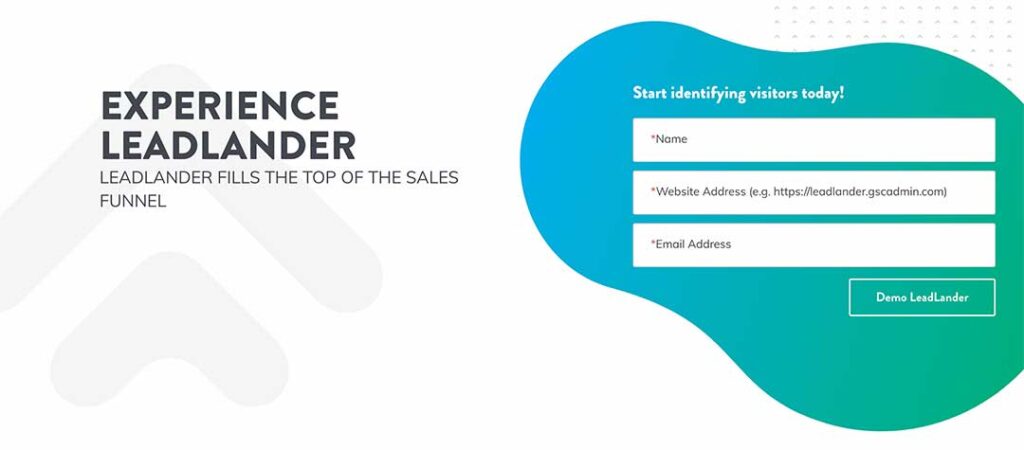Updated February 11, 2022
To grow and scale your business, you need to continuously feed your sales pipeline with new qualified leads. Targeted sales prospecting is one of the most effective ways to do this.
With a solid targeted sales prospecting plan, you can create a standardized method for your company to fill its pipeline with solid leads. This is one of the first and most essential steps to preparing your company to reach its goals in the future.
Understanding Targeted Sales Prospecting
Targeted sales prospecting is the first step toward getting new leads into your sales pipeline. It’s the process of identifying new sales targets, adding them to your database, then systematically reaching out to them to push them deeper into your company’s sales pipeline.
How Targeted Sales Prospecting Supports Your Bottom Line
The number of leads your business has to work with is everything. You need a steady stream of new prospects to keep your business growing, and targeted sales prospecting is the way you get those new prospects.
If you’re not performing targeted sales prospecting, then you’re relying on things like your advertisements to bring in new leads and without any direct effort on your end. Ads can help you get more leads for your sales pipeline, but targeted sales prospecting is much more direct.
Here are some of the benefits of targeted sales prospecting over collecting large prospect lists:
- Personalization: Not only will you have more success, but your prospects will have a better experience when you can get to know them personally. This personal touch will affect your sales and your reputation as a business.
- More opportunities: Targeted prospecting allows you to get to know your individual customers and their needs so you can up-sell, cross-sell and change your approach as needed.
- Resource protection: Targeted sales prospecting allows you and your team to spend time on high-value prospects, resulting in a more scalable sales process.
- Customer retention: When you take a targeted approach, your customers feel valued from the start, making them more likely to become loyal customers over time.

Tips For Using Targeted Sales Prospecting To Convert More Leads
Shift your focus
Before you begin, it’s important to hone in on your prospect as an individual. It may be tempting to create a prospecting checklist, for example:
- Place X number of cold calls today
- Schedule Y number of demos today
- Email Z number of businesses today
This approach may seem easier, but it isn’t a targeted approach, and it may end up forced, unnatural and fruitless. Instead, use some of the following methods to get to know your high-value prospects.
Start by identifying your ideal customer
Research suggests that up to 50% of your targeting prospects aren’t a good fit for what you sell. That means you’re potentially wasting up to half of the time you spend on targeted sales prospecting.
That’s why it’s important to start by identifying your ideal customer. This involves coming up with a buyer profile for an imaginary consumer or company that would be the ideal fit for what you sell.
For example, if you sell software as a B2B, your ideal customer would be a company with a need for your specific type of software.
To dive deeper into your ideal customer profile, ask your customer service people to review previous customers. They should identify similarities between satisfied versus unsatisfied customers so you can determine who is happiest with your product. Customer service reps can even reach out to previous customers and interview them.
In addition, ask your sales reps who they feel they are best at selling to. Look at the data to find out what type of customer is most likely to purchase your product or service.
Determine the best places to meet your ideal customer
Once you figure out who your ideal customer is, determine where to reach them. This can vary based on what you came up with while brainstorming your ideal customer.
Companies that sell products directly to consumers will likely find their target audience on social media platforms like Instagram and Twitter. But businesses that sell products to other businesses may want to focus more on cold-calling, email marketing, or even paid search marketing channels. You may also be able to find promising prospects at relevant conferences or webinars.
The key here is to zero in on the specific channels your ideal customer uses the most. That way, you can ensure you’re giving yourself the best chance of success while performing target sales prospecting.
Build your targeted prospecting list
Purchasing a targeted prospecting list can be risky. Building a promising list takes a lot of effort, so you’ll get what you pay for. You may be better off finding your own leads (with the help of the right analytics software).
Here are some ways to start building your targeted prospecting list.
- Do your research to find out which relevant industries are in good health.
- Search for applicable industries on a resource like Crunchbase.
- If you’re looking for software or SaaS companies, explore review sites like GetApp.
- Review important industry news like senior leadership role changes and rising businesses.
- Sift through social media hashtags and groups. Focus on the platforms that make the most sense for your product or service.
- Pay for LinkedIn’s Sales Navigator to filter individuals based on industry, job title, company size, etc.
Once you have a budding list, qualify your leads before making the first move.
Take the time to qualify your leads
Targeted sales prospecting is all about efficiency. There are only so many hours in the day, and you want to make sure you spend those hours speaking to prospects that are most likely to convert.
That’s why it’s always worth taking the time to qualify a lead. You’ll be able to determine whether the prospect should go into your sales pipeline or not.
There are many ways to qualify leads. These range from complex systems to simple questions that you ask yourself about a new prospect.
Here are some options you can use to qualify a lead:
- Create a lead scoring system and assign a numerical score to each prospect
- Use LeadLander to validate interest from cold calls and emails
- Determine whether the prospect fits with your ideal customer profile
- Make sure that the prospect can pay for your service and has the authority to make a purchasing decision
Send personalized emails instead of automated ones
Research from the Rain Group suggests that 80% of buyers prefer to be contacted by email. So if you want to fill your sales pipeline with new leads, cold emailing should be part of your strategy.
But too many salespeople use basic automated emails when they should be using a more personalized touch. The numbers speak for themselves: personalized emails have a 26% higher open rate than automated ones. That’s a huge delta that could be the difference between filling your sales pipeline or leaving it empty.
To successfully send personalized emails, you need to first understand who your prospect is and what they care about. With that information, you can speak directly to the prospect’s unique pain point or goal within the first few lines of the email.
You can get to know more about your prospect in the following ways:
- Identify and review the prospect’s social media profiles and recent posts
- Check their company website and review their “About Us” information
- Take a look at the prospect’s content or blog
When you speak to a prospect directly, you significantly increase the chances of earning their attention and eventually their business. Remember to incorporate an engaging subject line and then establish a connection in the first couple of sentences of your email. End the email with a clear call-to-action, like a concrete time to connect or a close-ended question like “Are you available to talk for 10 minutes tomorrow between 10 AM and 12 PM?”
Develop a reputation as a go-to source for industry information
Prospects that fit your ideal customer profile fit because they’re interested in and engaged with topics your company specializes in. You can leverage that to improve your targeted sales prospecting by developing a reputation as a source of valuable information in the industry.
Let’s say you work in digital marketing. Your goal could be to develop a reputation as a thought leader in your particular niche. The easiest way to develop a reputation like this is via social media. Publish blog posts, statistics, studies, and other information your leads will find valuable. With practice and dedication, you’ll slowly build a following. Then, once you have people looking to you for your insights, make the most of utilizing those connections as future leads.
Consider partnering with sales development reps
Sometimes the process of tracking down new prospects, qualifying leads, and getting prospects into your sales pipeline can feel overwhelming. Or maybe you just genuinely don’t have enough time to perform targeted sales prospecting in the right way. If this is the case, you may want to consider working with sales development reps (SDRs). These external sales agents partner with companies looking for extra help with their outbound sales.
SDRs are experts at discovering new prospects and getting them into your sales pipeline – and that’s exactly what targeted sales prospecting is all about.
So if you feel like you’re not able to excel with targeted sales prospecting with your in-house sales staff, consider looking outside of your company for support.
Don’t give up too soon
Prospecting for new leads is a tough job. It requires you to consistently reach out to people who haven’t already expressed an interest in your company’s products or services. The reality is, most of the people you speak with won’t convert to customers.
You may have to reach out to a prospect multiple times, and if you give up on a prospect too soon, you could lose a valuable opportunity for your business before it has time to materialize.
So regardless of which targeted sales prospecting strategies you end up using, make sure that you give them time to work on a prospect before crossing them off of your list.
Other strategies worth trying
Start your search with a smaller list
When you’re first diving into targeted sales prospecting, you want to attract and convert as many new leads as you can. But focusing on quantity in the early stages of this process isn’t always the best strategy.
Instead, consider trying out your new strategies on a smaller list of carefully chosen leads. That way, you get the chance to assess the efficacy of what you’re doing and can make changes if any are needed.
Once you’ve got a process down that you’re happy with, you can apply it to the rest of your list. Doing this will help you avoid burning through too many leads before getting consistent at targeted sales prospecting.
Interview happy customers
Before you can hit your prospecting goals, you have to know what you’re looking for. So try interviewing existing customers you know are happy with your offerings.
You can talk to those customers about what they like and dislike about working with your company. Try talking to a handful of clients to get a sense of any meaningful trends that emerge in their answers.
Then you can take that information and apply it to your prospecting process. For example, you might discover which of your company’s benefits is the best to highlight with a specific type of buyer. Or you could learn new ways clients use your products and add those to the features you discuss with prospects.
Get rid of the generic
When prospecting, the last thing you want is to be generic. Most B2B buyers are bombarded with sales emails daily. They develop an automatic, unconscious filter for this type of content.
That means you need to stand out if you want to get the attention of your prospects. You do that by embracing personalization in your marketing and sales efforts.
Personalization is all about tailoring the way that you talk to a prospect based on what you know about them.
It can be simple, like using their name and company name in an email, or it can be complex, like creating a customized pitch for a prospect based on your research.
Don’t underestimate phone calls
In a world buzzing with social media and free content, you might be neglecting your call lists. While you work with other strategies, set time aside each day to call individuals on your cold and warm lead lists. Here are some tips for more personalized and successful sales calls:
- Don’t script a boring sales pitch. Instead, outline an open dialogue that addresses specific pain points and needs.
- Invite them to learn more about your business through a free trial, PDF, or webinar
- Always stay in touch. If you don’t hear from them in a week or two, call again. Work the list consistently to slowly warm your leads over time.
Nail your follow-ups
You won’t win over most of your leads the first time you contact them. That’s why you need to learn how to nail your follow-up communications with someone you’ve already spoken to.
The best strategy will vary based on the conversation you’ve had with the person. Doing things like sending over relevant blog posts and studies can be effective.
If you’re not sure which strategy will work best, start by trying a few different ones out and assessing based on the results you see.

Look for Referrals
Referrals are extremely valuable. Research indicates that people who are referred to a company or product by a friend are about 4 times more likely to make a purchase from that brand.
That’s why referrals should be a big part of your sales prospecting strategy. You can ask for them directly when you sense a good opportunity. But you can also create programs that incentivize them.
For example, you might offer a free month to anyone who introduces you to a referral that converts. Or you could run a giveaway that everyone gets entered into when they make a referral.
Focus on prospect scoring
As a salesperson, you only have a limited amount of time every day to focus on reaching out to new clients. That’s why it’s important for you to spend that time in the most productive way possible. Part of that is focusing on leads with the highest likelihood of conversion first.
It’s why prospect scoring is a smart idea. This is the concept of assigning a grade or number score to each lead in your sales funnel. That way, you know where to spend your time first.
There are tons of different ways to score a prospect, including based on their engagement with your brand or how well they fit your ideal buyer profile. We’ve put together a comprehensive blog post covering this topic if you’re looking for ideas.
Read your prospects’ blogs
If you sell B2B products, then many of your prospects will likely have blogs. It’s good to stay on top of the content in these blogs because they provide an easy way to strike up a conversation with a lead.
For example, you might read one of your prospect’s latest blog posts and then send them an email about its content from your perspective. This type of interaction is a great way to form relationships with your prospects, which should pay dividends when the lead is ready to make a purchase.
Take advantage of sales prospecting tools
There are also tons of different tools out there that are meant to make sales prospecting easier. These include CRMs, website visitor tracking software, and many more.
Tools like these can automate some repetitive processes for you, give you additional insights into your prospects, and help you figure out the best way to convert your leads. So why wouldn’t you take advantage of them?
Iterate and adapt
Finally, it’s important not to rest on your laurels when you’re trying to get better at sales prospecting. Technology, best practices, and people are constantly changing. Your strategies will likely need to continuously evolve as well if you want to keep up with the competition.
In order to do that consistently, you’ll likely need a way to track your sales prospecting performance over time. You can use something simple like Excel sheets to track performance or you can look at a specialized tool that will do this for you.
LeadLander Makes Targeted Sales Prospecting A Breeze
One of the most important parts of targeted sales prospecting is validating the interest of your prospects.
LeadLander provides real-time alerts when new and returning leads visit your website. We’ll also tell you how each lead is interacting with your website so you know which of your products or services they care most about. This can be hugely beneficial to your entire sales process.
LeadLander also identifies undiscovered leads visiting your website. That makes our platform a great supplementary tool in your quest to find new leads to fill your pipeline.
For both of these reasons (and several more), LeadLander is a great way to get more out of your sales prospecting process. You can try LeadLander for free by visiting our website and signing up for a 14-day trial.

